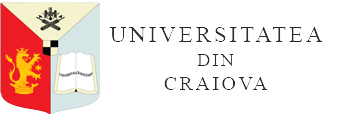ASSESSMENT OF IRRIGATION WATER REQUIREMENTS FOR APPLES, PEARS, AND PLUMS IN THE KOLUBARA AND MORAVA DISTRICTS UNDER CHANGING CLIMATE CONDITIONS
DOI:
https://doi.org/10.52846/aamc.v53i1.1438Abstract
Climate change, which manifests through shifts in temperature, rainfall patterns, and the frequency of extreme events like droughts and floods, has a substantial impact on agricultural production and food security. This study investigates the influence of climate change on the irrigation needs of apple, pear, and plum crops in two fruit-growing districts in western Serbia, specifically in the Kolubara and Morava districts. This research aims to provide valuable insights for farmers to plan and adapt their production strategies in response to evolving climate conditions. To estimate the water requirements, crop evapotranspiration (ETc), effective rainfall (Pe), and water deficit (In) were determined using historical climate data from meteorological stations in Valjevo (Kolubara district) and Požega (Morava district) for the observed period (1961 - 2021). For projecting future water requirements (2021 - 2040), we employed data from eight regional climate models within the EURO – CORDEX project. The analysis of water requirements for apple, pear, and plum was conducted for both grassed and non-grassed orchards.
In the Kolubara district, the average seasonal water deficit during the observed period was 356 mm in grassed orchards and 191 mm in non-grassed orchards, with the most significant irrigation requirements occurring in July and August, representing 60 - 70% of the seasonal water requirement. Looking ahead to the future period (2021 - 2040), the average water deficit increases to 401 mm in grassed orchards and 202 mm in non-grassed orchards, marking a 13% and 6% rise, respectively, compared to the observed period. This signifies a need for 1 to 2 additional irrigation sessions. In the Morava district, the average seasonal water deficit during the observed period was 403 mm in grassed orchards and 236 mm in non-grassed orchards, with the highest irrigation requirements in June, July, and August, accounting for 80 - 90% of the seasonal water requirement. Due to an anticipated increase in total precipitation in the future period (2021 - 2040) in the Morava district, there is a decrease in the seasonal water deficit by 3% in grassed orchards and 16% in non-grassed orchards. However, even with reduced water requirements in the future, there remains a significant requirement for irrigation in May, June, July, and August when rainfall is limited.


